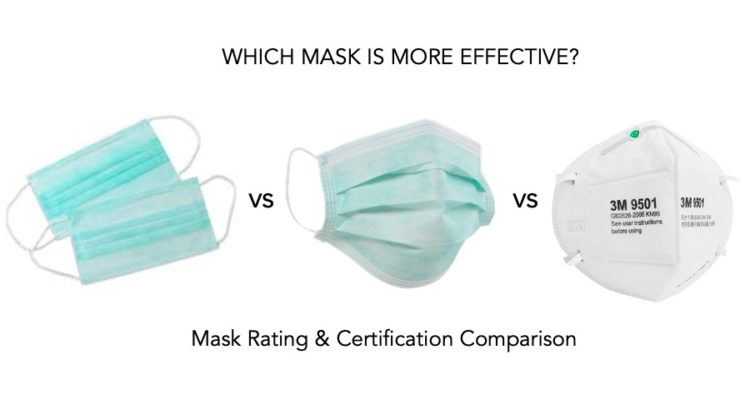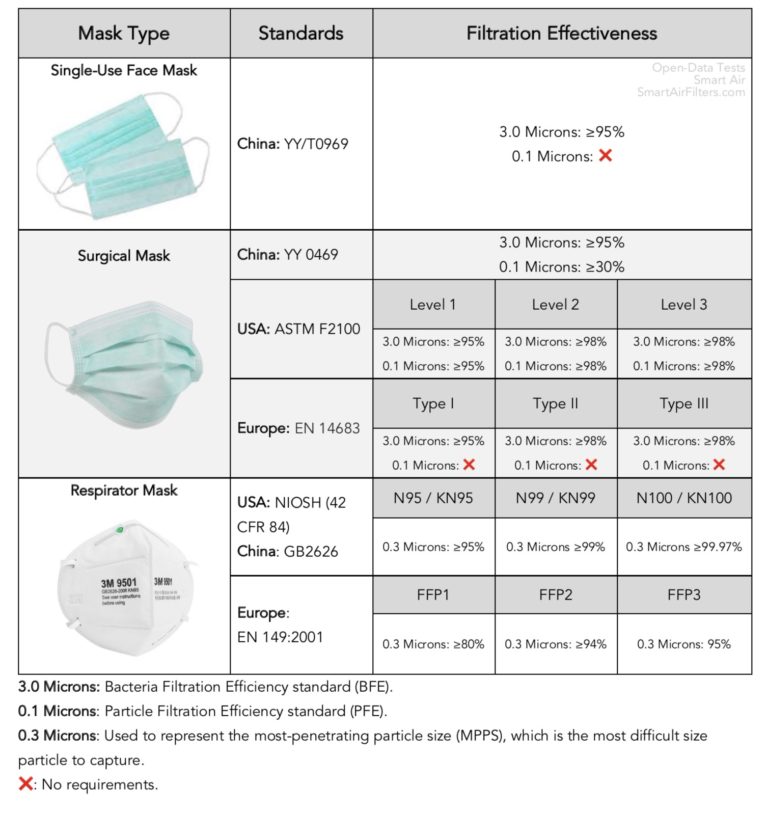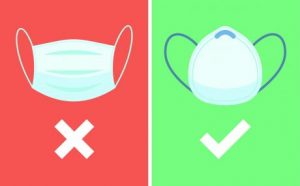N95, FFP1, P2, or Surgical mask Comparison– Hello guys, I hope you are doing well. As we already know about coronavirus. It is spreading globally very fast. So, to fight coronavirus we started using a mask for our safety. But do you know, which mask is more effective and save you from this kind of such virus? If not, then keep reading this article until the end. Today, we will show you the mask comparison and which mask is better for coronavirus.
For our safety from coronavirus and another virus, we should use some mask that helps us to protect from viruses. The virus comes from outside and entered our body through mouth and nose and mask play a very important role to stop that virus to enter in our body via mouth and nose. So, use the mask to save yourself if you go outside the house. Otherwise, stay at home and protect yourself.

Contents
Check out the below chart for detail-

- Single use masks (normally one layer, very thin) are typically only effective at capturing larger dust particles, but can do so fairly well.
- Surgical mask standards have higher requirements for capturing virus-sized (0.1 micron) particles, however they vary by region.
- Pollution masks (respirators) typically capture >90% of virus-sized particles. You can use the rating system in the table above to see the exact proportion each certification requires.
3M or FFP1 or N95? What Do Mask Numbers and Letters Mean?
With the sudden need for mask, the whole world is needing to become mask experts overnight. These certifications make the task that much more confusing. Here’s a summary.
Must Check – Best Deals & Offers on Mask for Coronavirus
N95, N99, FFP1, FFP2 and FFP3 Masks
The ratings cover (most importantly for us) the filtration level, among other things. You can think of them like G, PG, PG-13, R ratings for movies. The movie ratings cover who can watch them.

A contagious patient should wear a surgical mask as soon as contagion is suspected.
In Europe, for caregivers, it is necessary to wear a respirator of at least class FFP2 or FFP3 for maximum filtration of particles and aerosols when caring for a patient who is infected or suspected of being so.
In the United States, the N95 respirator filters 95% of airborne particles, and can even filter out bacteria and viruses, according to the Centers for Disease Control and Prevention. So for caregivers, it is necessary to wear a respirator of class N, R or P.
When to use a mask?
- Before putting on a mask, clean hands with alcohol-based hand rub or soap and water.
- Cover mouth and nose with mask and make sure there are no gaps between your face and the mask.
- Avoid touching the mask while using it; if you do, clean your hands with alcohol-based hand rub or soap and water.
- Replace the mask with a new one as soon as it is damp and do not re-use single-use masks.
- To remove the mask: remove it from behind (do not touch the front of mask); discard immediately in a closed bin; clean hands with alcohol-based hand rub or soap and water.

- If you are healthy, you only need to wear a mask if you are taking care of a person with COVID-19.
- Wear a mask if you are coughing or sneezing.
- Masks are effective only when used in combination with frequent hand-cleaning with alcohol-based hand rub or soap and water.
- If you wear a mask, then you must know how to use it and dispose of it properly.
How to put on a face mask?
- Clean your hands with soap and water or hand sanitizer before touching the mask.
- Remove a mask from the box and make sure there are no obvious tears or holes in either side of the mask.
- Determine which side of the mask is the top. The side of the mask that has a stiff bendable edge is the top and is meant to mold to the shape of your nose.
- Determine which side of the mask is the front. The colored side of the mask is usually the front and should face away from you, while the white side touches your face.
- Follow the instructions below for the type of mask you are using.
- Face Mask with Earloops: Hold the mask by the ear loops. Place a loop around each ear.
- Face Mask with Ties: Bring the mask to your nose level and place the ties over the crown of your head and secure with a bow.
- Face Mask with Bands: Hold the mask in your hand with the nosepiece or top of the mask at fingertips, allowing the headbands to hang freely below hands. Bring the mask to your nose level and pull the top strap over your head so that it rests over the crown of your head. Pull the bottom strap over your head so that it rests at the nape of your neck.
- Mold or pinch the stiff edge to the shape of your nose.
- If using a face mask with ties: Then take the bottom ties, one in each hand, and secure with a bow at the nape of your neck.
- Pull the bottom of the mask over your mouth and chin.

2 thoughts on “N95, FFP1, P2, or Surgical mask Comparison – Which Mask is Better for Coronavirus?”